Castlegrey
Houses within 10km of this house
Displaying 53 houses.
Houses within 10km of Castlegrey
Displaying 53 houses.
| House name | Description | |
|---|---|---|
| Bunratty | Built in 1804 for Thomas Studdert, it was a Studdert home throughout the 19th century and for part of the 20th century. The house was used by Shannon Development as their offices for some time and it is now part of the Bunratty Folk Park. | |
| Bunratty Castle | In the 1680s Bunratty was the principal seat of the Earl of Thomond. In the early 18th century the castle and demesne were leased to Thomas Studdert by the Earl of Thomond and the castle became a Studdert residence. In 1786 Wilson refer to a seat of Mr. Studdert at Bunratty. For some time in the mid 19th century it served as an Royal Irish Constabulary barracks. In 1894 it was the seat of Capt. Richard Studdert. |

|
| Bunratty Lodge | Originally a Spaight home, inhabited by Richard Dawson and his wife Ellen Studdert. Richard Dawson was the third son of Charles Dawson of Charlesfort, county Wexford and left an only son also named Richard who lived in this house at the time of Griffith's Valuation, holding it from Thomas Studdert. In 1837 Lewis wrote that this house immediately adjoined the village of Bunratty and was the residence of Mrs Paliser. | |
| Bunkers Hill | A mid 19th century house, the home of James Forost (1827-1907), author of ''The History and Topography of the County of Clare'' (1893), who held the house and 139 acres from Lord George Quin. He was the eldest son of William Frost and his wife Mary Ryan and he married Bedelia daughter of Augustine Moran of Willbrook. He left the house to the Dundon family who sold it to the Ryans circa 1917. Members of the Ryan family still live at Bunkers Hill. | |
| Clorhane | Home of Thomas Dalton in the mid 18th century and of the Fosbery family in the 19th century. Held by George Fosbery junior at the time of Griffith's Valuation when the buildings were valued at £11. Home of Francis Wise Browning in the early part of the 20th century following his marriage to Jane Philippa Fosberry daughter and co heiress of Thomas Fosberry of Kilgobbin and Clorane. Cussen writes that this house is now demolished. | |
| Curraghbridge | Located on the Bury estate and home of a branch of the Fosbery family for much of the 18th and 19th centuries. Taylor and Skinner record the occupant as the Reverend Mr Westrop in the late 1770s. ''Burke's Irish Family Records'' records Thomas Westropp of Curraghbridge, father of the Reverend Thomas Westropp rector of Doonass. The residence of G. Fosbery in 1814 and in 1837. Described circa 1840 as in good repair and comprised of 4 storeys. Occupied by Samuel Dixon Power in the early 1850s who held the house and 197 acres from George Fosbery. It was later occupied by S.D. Power's son-in-law, Edmond Langley Hunt. A house is still extant at this site. | |
| Currah Chase | This was an 18th century house with early 19th additions, home of the Hunt/De Vere/ Vere O'Brien family. In 1906 it was valued at £57 and was occupied by Henrietta L. De Vere. Bought by the Forestry Department in the 1940s the house was destroyed by fire in 1949. |
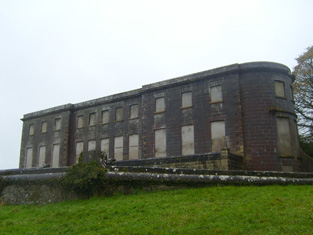
|
| Farm Lodge | Marked as Farm Lodge on the first Ordnance Survey map this house on the De Vere estate was occupied by James Potter in the early 1850s when it was valued at £16. An extensive farm still exists at the site. | |
| Rockfield | The residence of Edward Fitzgerald in the first half of the 19th century, held by him from Captain Richard Gloster at the time of Griffith's Valuation and valued at over £11. | |
| Cartown | Built in 1763 Cartown was the residence of Mr Baldwin in 1826 and of John Edward Langford in 1837. In the early 1850s Griffith's Valuation records the vacant house as valued at £24, William Sheedy holding the whole townland from General James Caulfeild. By the late 19th century the house was in the possession of the Westropp family. This house is still extant and occupied. |

|
| Mellon | The Westropp family are recorded as "of Mellon" from the early 18th century. Bence Jones dates the present house from circa 1780, the Ordnance Survey Field Name Books from 1812. Inhabited by Mrs Jane Westropp (nee Dawson) in the early 1850s. It was valued at £36. This 3 storied house was still in Westropp possession in the late 20th century. It is now run as a stud. |
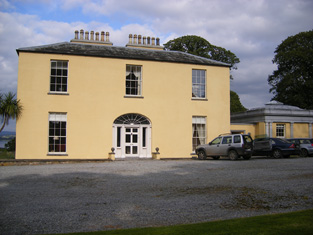
|
| Mount Pleasant | The Ordnance Survey Name Books record that this house was built in the mid 18th century by a Mr Star. It was a neat farm house occupied by Mrs Hill in 1837 and by Thomas Hill at the time of Griffith's Valuation. He held the property from Daniel Leahy and the buildings were valued at over £11. This house is still extant and occupied. |
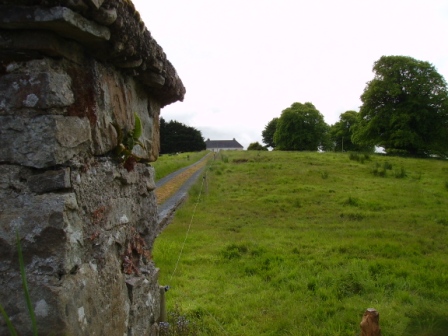
|
| Shannon Grove | Originally the home of the Bury family, Earls of Charleville, overlooking the Shannon estuary. The Ordnance Survey Name Books record this house as four-storied, built in 1709. Bence Jones dates this house from the early 18th century. Lewis writes that Shannon Grove was the old family mansion of the Earls of Charleville and "now the residence of Bolton Waller". Bolton Waller held the property in fee in the early 1850s when the buildings were valued at £43 and the demesne was over 400 acres. Bought by John Sheehy of Askeaton in 1860 and remained in the possession of his descendants until the mid 20th century. The house is still extant and occupied. |
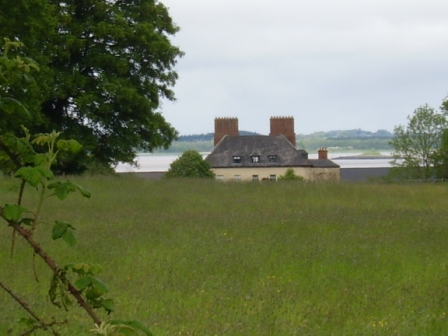
|
| Castletown | The main residence of the Waller family in the 18th and 19th centuries, now demolished. The house was valued at £80 in the early 1850s when it was the residence of the Reverend William Waller. By 1906 its value was reduced to £72.5 shillings and it was occupied by the Reverend John Thomas Waller who was also resident in 1894. The surveyor for the Irish Tourist Association Survey in 1944 refers to the house being recently levelled to the ground. | |
| Bushyisland | This house was the residence of Peter Lowe in 1814 and in 1837. John Peppard MD was the occupier at the time of the first Ordnance Survey and of Griffith's Valuation. He held the property from Bolton Waller and had converted the house into an asylum. | |
| Kilbreedy | A house occupied by Michael Nash at the time of Griffith's Valuation and held from the Reverend William Waller, valued at £11. | |
| Stonehall | A house built 1803 and situated on the Waller estate in the mid 19th century and occupied by the Langford family from at least the early 19th century. This house is still extant and occupied and the property includes an open farm. |

|
| Copsewood | Copsewood Cottage is marked on the first Ordnance Survey map at this site. A much larger house was built in the mid 19th century for Major General Caulfeild. It was valued at £36 at the time of Griffith's Valuation and at £63 in 1906. It remained in the possession of the General's descendants until 1919 when it was bought by the Salesian Fathers who started an agricultural school. It is now a secondary school run by the Salesian Order. |

|
| Summerville | Described by Lewis as an ancient seat of Lord Charleville "now occupied by an agent". In the early 1850s Patrick and Michael O'Donnell were resident and they held the property from General James Caulfeild. | |
| Ballysteen | Home of the Westropp family in the 18th and 19th centuries and occupied by Colonel John Westropp in 1814. The Ordnance Survey Field Name Books circa 1840 state that John Westropp built the house in 1809 on the site of the former house. By 1837 it had passed to his nephew Edmond Odell who had assumed the name Westropp. Ballysteen valued at £40 was held by Edmund Westropp in fee at the time of Griffith's Valuation and in 1906 by Richard Westropp when its value had increased to almost £45. |
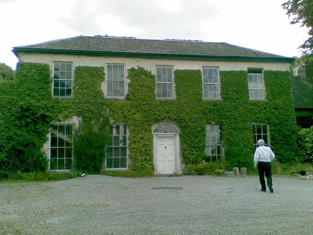
|
| Glenagaureen | The Ordnance Survey Field Name Books circa 1840 record an unoccupied house named Glenagordon in Ballysteen, built 1826 by Edmund Odell Westropp. A vacant house valued at £16 and held by Edmund Westropp was recorded in Griffith's Valuation for Ballysteen. | |
| Milltown | The Reverend Champagne was resident at Milltown from at least 1837. He is recorded as the occupier of this house in the early 1850s when he held the house valued at £28 from the Reverend Tyrell Evans. | |
| Holly Park | In 1786 Wilson describes Holly Park as "the seat of Richard Taylor, it is very commodious and well-situated, having convenient offices and extensive demesnes". Lewis writes that Holly Park was the ancient residence of the Taylor family "now the property of Sir Aubrey de Vere". However Griffith's Valuation records Richard Taylor holding Holly Park in the early 1850s in fee. It was valued at £36. In 1894, Slater referred to it as the seat of George Taylor and in 1906 George Taylor held 277 acres of untenanted land and a mansion house valued at £34 at Currahchase North. Sold by the Taylors in 1939. Feheney writes that the son of Tom Clarke, one of the leaders executed in 1916, bought Holly Park from the Land Commission in the 1940s. The home of John Philip Cohane in the 1970s who had restored the house after a fire. It is still extant. | |
| Ballynolan | This 3 storied house was the seat of the Reverend Thomas Westropp, rector of Ardcanny, built by him [his father?] in 1797. It was occupied by H. Potter esquire in 1837 and by Peter W. Morgan at the time of Griffith's Valuation who held it in fee with a demesne of 98 acres. Valued at £11.10 shillings in 1906 and occupied by Sarah E. M. Westropp. Still extant and occupied. |
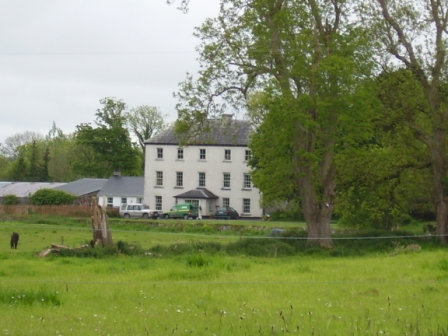
|
| Ballynacourty | A house occupied by Thomas Davenport from at least 1837. The Ordnance Survey Field Name Books circa 1840 state that the house was built by John Evans "about 90 years" previously. It was two storeys high. The house was valued at £15 in the early 1850s and was held from Daniel D. Power. The house is still extant and now owned by John Feheney. For more information see www.iverusresearchfoundation.com (See ‘Research Notes’, Ballinacourty House). |

|
| Bolane | Bollane Cottage was occupied by Arundel Hill in 1837. A house at Bolane was the residence of Thomas Hanly in the early 1850s and valued at £16. It was held from Daniel D. Power. A house is still extant at this location and occupied. |
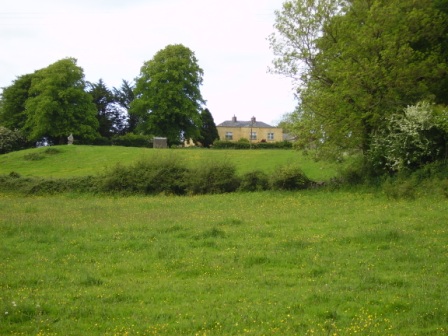
|
| Ballynacarriga | The Ordnance Survey Field Name Books describe this house as "falling into decay", the property of Mr Enright. By 1837 a Mr Dawson was the proprietor of Ballynacarriga House and in the early 1850s it was occupied by Dawson L. Westropp. In 1906 Ballynacarriga valued at £20.10 shillings was occupied by Norris Richard Russell. | |
| Ballynacarriga | Built in 1819 this house was occupied by a member of the Hill family at the time of the Ordnance Survey who was renting the property from Mrs Hurst . Lewis records H. Hurst as resident in 1837 and in the early 1850s Captain Richard Gloster held this house valued at £21 in fee. This house is now known as Rockfield. |

|
| Court/Kildimo Court | In 1837 Lewis wrote that Kildimo Court "which is nearly entire was the seat of the Hartstonge family". The Hartstonges appear to have inherited this property from the Widenhams. In 1786 Wilson refers to Court as the seat of Sir Harry Hartstronge and notes that "a bridge is now building at the ferry of Court but the house is in ruins". The property called Court Castle is labelled "in ruins" on the 1st edition Ordnance Survey map. A house labelled "Court" appears in the same townland on both the 1st and 25-edition maps. Buildings are still present at this location. | |
| Castle Hewson | The seat of the Hewson family of county Limerick. William Hewson was in residence at the time of Griffith's Valuation when the buildings were valued at £23. Castle Hewson is no longer occupied but William Hewson, a descendant of George Hewson, resides in a building closeby and is restoring the property. A tower house stands beside the house. |

|
| Hollywood | Occupied by James Raymond in 1814 this house became the residence of a junior branch of the Castle Hewson family. The home of James Hewson at the time of Griffith's Valuation who held the property valued at £17+ from Henry Fitzgerald. |

|
| Clonshire | Occupied by George Fosberry in 1814 and by J. Dickson in 1837. This one storey house was described as a ''comfortable slated cottage built in 1812 by the present occupier Col. John Dickson'' [brother of the Reverend Richard]. This house, valued at £22 at the time of Griffith's Valuation, was occupied by Samuel D. Power who held it from John Pigott. Clonshire is now the location of a large equestrian centre. Owned by the Greenall family, Lord Daresbury, in the 20th century. [The Greenalls also bought Mount Coote]. |

|
| Ballinvira | Ballinvira was occupied by Thomas Fitzgerald in 1814 and by Gerald Browne Fitzgerald in 1837. The residence of William Power in the mid 19th century, held from Henry Fitzgerald and valued at £12. | |
| Altavilla | Bence Jones writes that this house was built by the Bateman family in the mid 18th century to the design of Francis Bindon. In 1786 Wlson refers to it as the seat of Jon Bateman. The Ordnance Survey Name Book records that Altaville House was a rectangular building of four storeys built in 1749 by Mr Bateman and that it was then [circa 1840] undergoing repairs by Peter Griffin of Corgrieff. At the time of Griffith's Valuation it was inhabited by Peter Griffin who had carding mills and offices closeby. He held the property from William Dickson. It is still extant. |

|
| Ballinvirick | The residence of the Royse family, held in fee by Thomas Royse at the time of Griffith's Valuation and valued at £15. Earlier in the 1830s Lewis writes of the great improvements which were in progress at Ballinvirick, Thomas Royse proprietor. In 1906 the house was occupied by Frances and Isabella Royse. Sold by the Royse family in 1919, it became a dowager house for Castle Hewson in the 1920s. The house has had a number of different owners in the 20th centuries and is still a family home. It is open to the public for two months of the year, see www.ballinvirick.ie/ |

|
| Nantinan House | Bence Jones writes that this was a mid 19th century house of the villa type. The original Nantenan was the residence of Major Wilson in 1814. In 1786 Wilson refers to it as the seat of Mr. Royse. It was renovated by Thomas H. Royse in the 1830s. The Ordnance Survey Name Book [circa 1840] states that the house was built about 100 years previously and that the family arms were cut over the hall door. Lewis writes of ''the very interesting improvements'' which ''have been made at great expense'' by T. H. Royse. This Royse residence was valued at £30 at the time of Griffith's Valuation and was held by Thomas Royse in fee. Advertised for sale in 1853 the house and 145 acres were purchased by John White for £3,800. He demolished the old house and built a new one in the late 1850s, which was still in the possession of the White family in the 20th century. In 1906 this house was valued at £48. In 1944 the author Dorothea Conyers is recorded as the owner (ITA). |

|
| Cappagh | Eyre Lloyd of Wales and William Hammond of Dublin were proprietors of this townland circa 1840. At that time Robert Peppard lived at Cappagh House which is described as an irregular two storied house, part of it built 120 years previously with later additions. Robert Peppard was still resident at the time of Griffith's Valuation when the house was valued at £14+. Robert Peppard was married to Anne Brown of nearby Mount Brown. Whelan writes that the Peppards had lived at Cappagh from the early 18th century. The last family member to live at Cappagh died in 1938. The house has had a number of owners in the 20th century and the interior was badly burnt by fire in 1983 but has since been restored. |

|
| Newborough | A house on the Dunraven estate occupied by the Reverend J. Croker in 1814 and by members of the Wilson family in 1837 and the 1850s when the buildings were valued at £40. |

|
| Faha | A property that was in the possession of the Tuthill family from the early 18th century, Wilson refers to it as Mr. Tuthill's seat in 1786. Occupied by Christopher Tuthill in 1814 and by his son George in 1837. Held by George Tuthill in fee at the time of Griffith's Valuation when the buildings were valued at £60. Thompson Russell lived at Faha in the second half of the 19th century. Valued at £52 in 1906 and occupied by George Taylor who held it with 308 acres of untenanted land. It is now a ruin. |
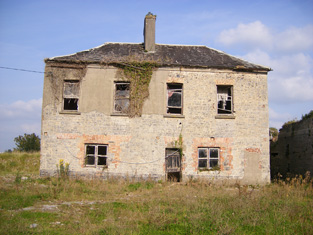
|
| Corcamore | A house situated on the Barker estate and occupied by Thomas Gleeson in the mid 19th century and valued at £18. [Grid reference is approximate]. | |
| Cragbeg | A house situated on the estate of Lord Clarina, occupied by Vokes in the 1770s and in 1786. It was leased to the Vandeleur family in the mid 19th century. Major Thomas Vandeleur was the occupier and the buildings were valued at £38. Occupied by Richard Parson in 1814, by G. Vandeleur in 1837 and by William Henry Harkness in the 1870s. Slater notes Lieut-Col. Lionel E. Massey as the owner in 1894. Still extant and occupied. |

|
| Elm Park | The records suggest that this house was built post 1814 and pre 1837 though there may have been an earlier property as Wilson refers to "Elm" as the seat of General Massey in 1786. Bence Jones writes that it was an early 19th century house. It was the home of the Massey family, Barons Clarina, in the 19th century. The buildings were valued at £90 at the time of Griffith's Valuation and in 1906. Bought by Patrick King in 1925 and home of the King family until 1956, now demolished. |

|
| Spring Lodge/Springfort | Dickson Esq was occupying a house at Ballybronoghe in the 1770s and in 1786. Spring Lodge was occupied by George Massey at the time of Griffith's Valuation and held from the Court of Chancery. George Massey was possibly the younger brother of the 3rd Lord Clarina. It is labelled Spring Lodge on the 1st edition Ordnance Survey map but as Springfort on the 25-inch edition of the 1890s. It is still extant and occupied. |

|
| Finniterstown | Mr Edmund Hogan was resident at Finniterstown in 1814. The Ordnance Survey Field Name book records the building of a 2 storey house at Finneterstown in 1833 and that it was occupied by William Fosberry circas 1840. Located on the St Leger estate this house was occupied by Frederick Maunsell in the early 1850s and was valued at £11. | |
| Adare Manor | Early 18th century house replaced by a Tudor-Revivalist style building in the mid 19th century, the home of the Quin family and Earls of Dunraven. In 1786 Wilson describes the original house as "a very noble structure with fine and extensive demesnes". At the time of Griffith's Valuation valued at £130 and in 1906 the buildings at Adare Manor were valued at £182. Now functions as a hotel. |
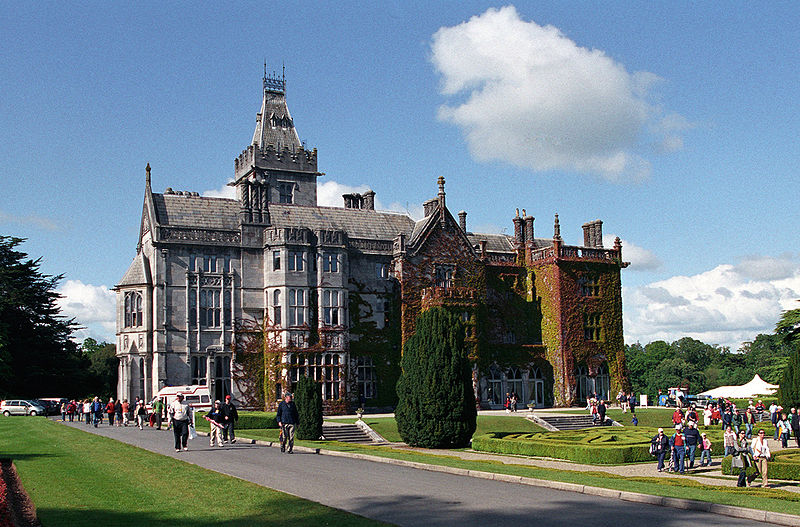
|
| Ballynort | A Taylor residence which passed by marriage to the Massy family. In1786 Wilson describes it as" the pleasant seat of Mr. Massey". The townland of Ballynort, 657 acres, was held in fee by Standish O'Grady and E.T. Massy at the time of Griffith's Valuation. This house is marked "in ruins" on the first Ordnance Survey map. The buildings were valued at £4+. There is no trace of the house on the 25-inch Ordnance Survey map of the 1890s. | |
| Kilgobbin | Occupied by George Fosberry in the early 1850s held from the Earl of Dunraven and valued at £30. An inventory of the furniture at Kilgobbin was compiled in June 1923 for A.P.Pollock. It is still extant. | |
| Mondellihy | Occupied by George Fosberry at the time of Griffith's Valuation, held from the Earl of Dunraven and valued at £15. By the end of the 19th century this house was the home of Peter David Fitzgerald (1855-1935), a younger son of George Fitzgerald 1st Baron Fitzgerald of Valencia and grandson of the Knight of Kerry. |

|
| Rineroe [Fort Union] | The house at this site is labelled Rineroe on the 1st edition Ordnance Survey maps but as Fort Union on the later 25-inch map of the 1890s. It was held by John Christy from the Dunraven estate at the time of Griffith's Valuation and valued at £24. It is still extant and occupied. |
![Photo of Rineroe [Fort Union]](https://landedestates.ie/storage/img/orig/2850.jpg)
|
| Dromore Castle | In 1868 the building of Dromore Castle began. It was an elaborate country retreat for the 3rd Earl of Limerick designed by Edward William Godwin. In 1906 this mansion house was valued at £75.10 shillings. The 4th Earl of Limerick did not visit Ireland very much and the castle was sold in 1939. In 1944 the Irish Tourist Association surveyor refers to the castle as the property of Mr M.McMahon, a timber merchant of Limerick, who bought the property in 1941 for a reputed £8,000. By the mid 20th century it had fallen into disrepair and the roof was taken off. Plans to develop the site and to demolish the ruin are current issues discusssed in the local and national press. |
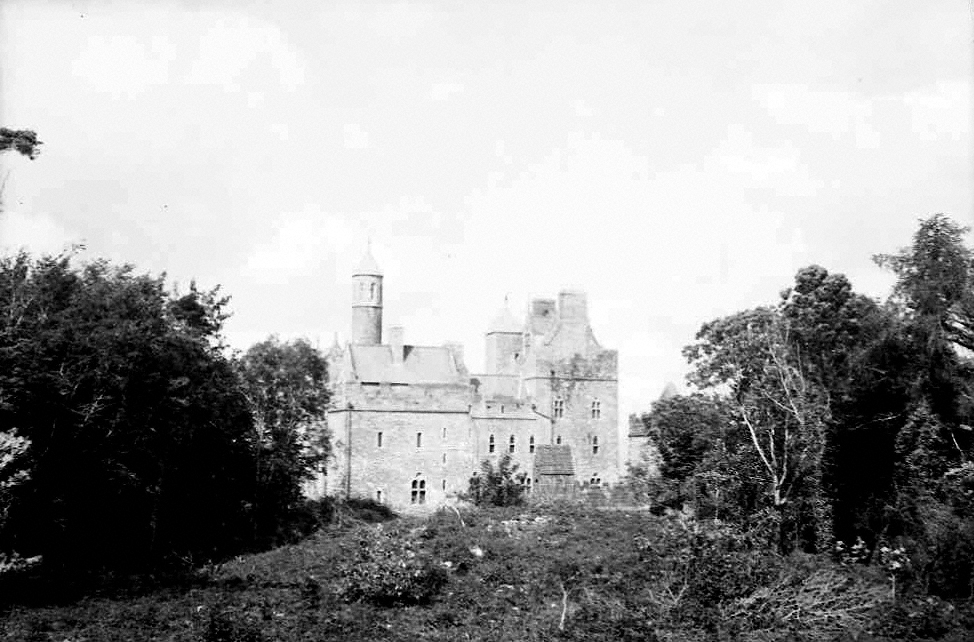
|
| Smithfield | Originally a Aylmer residence, later leased by the Smith family. The house was occupied by Richard Smith in 1814 and by R. Smith in 1837, later in the possession of the Fergusons. A 3 storey hand drawn house is depicted on the sale rental map of the Aylmer estate. Smithfield House is now the centre of a working farm run by the Lowe family and offers Bed and Breakfast accommodation. |

|
| Inchirourke More | The residence of Hunt Esq in the 1770s and in 1786. Occupied by Edward Hunt in 1814. At the time of Griffith's Valuation, Robert Hunt held the house, valued at £6.5 shillings, and over 500 acres in the townland of Askeaton from Sir Matthew Blakiston. It is still extant. |

|
| Curraheen | The home of the Stephenson family for some of the 19th century. Slater's Directory of 1846 for the town of Rathkeale records Mr John Stephenson of Curraheen but no Stephenson is recorded in Curraheen South in Griffith's Valuation. |

|

